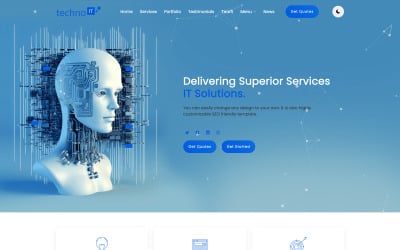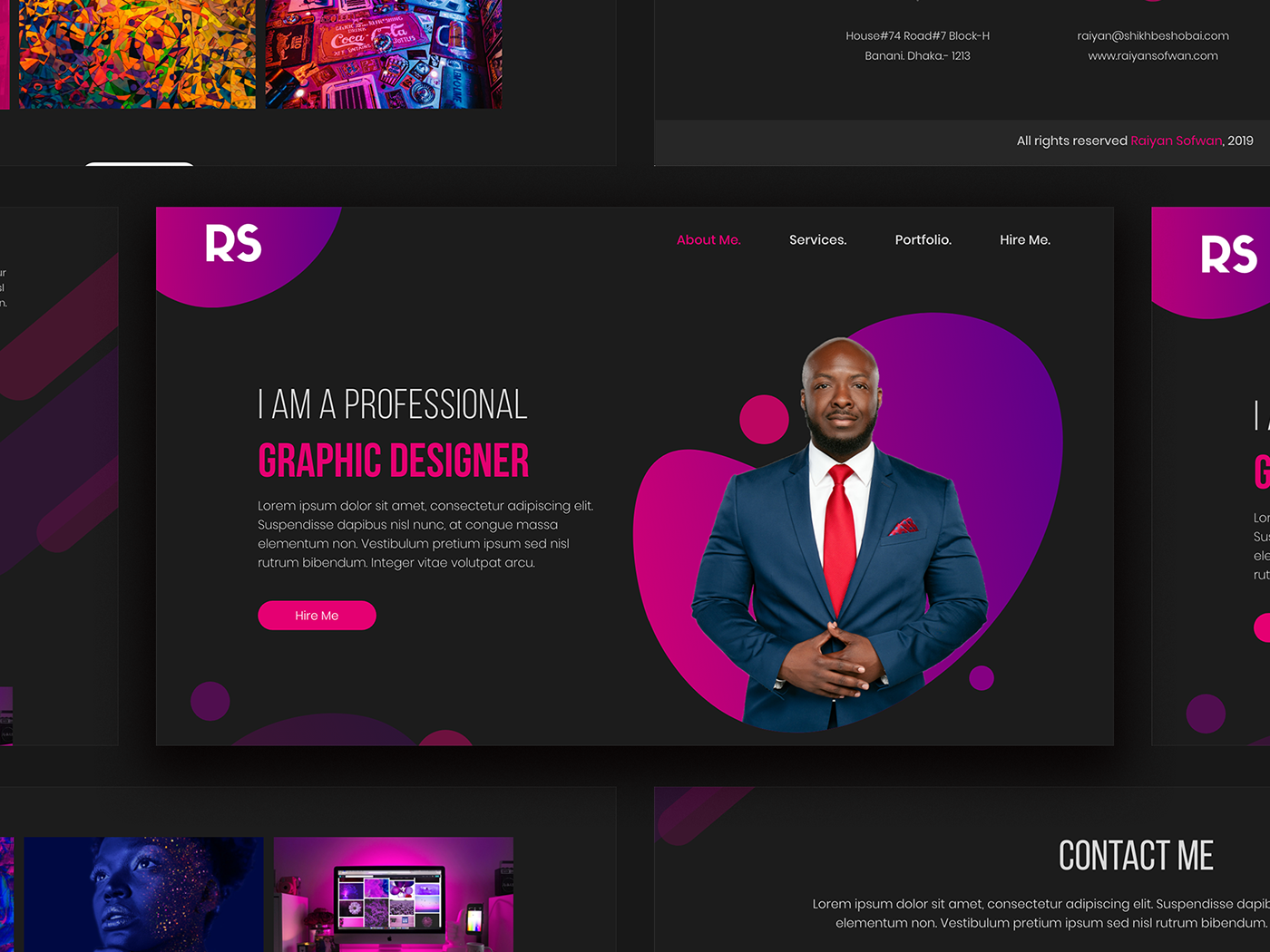Top Fads in Modern Website Design for 2024
The Power of User-Centered Internet Site Design in Expanding Your Online Audience
In a significantly affordable digital landscape, the importance of user-centered web site layout can not be overstated. By concentrating on the requirements and behaviors of individuals, companies can create websites that not only draw in however additionally involve a diverse audience. Effective layout principles-- such as intuitive navigating and access-- are essential in fostering individual contentment and loyalty. However, comprehending just how to take advantage of these concepts successfully elevates vital inquiries regarding application and effect. What strategies can organizations adopt to guarantee their styles reverberate with users and inevitably drive growth?

Recognizing User-Centered Style
User-Centered Layout (UCD) is a fundamental approach to site growth that focuses on the demands, choices, and habits of end users throughout the layout procedure. This method emphasizes comprehending users deeply-- through research techniques such as interviews, surveys, and usability screening-- to create a web site that resonates with them. By integrating user responses at every stage, designers can make certain that the end product aligns carefully with customer expectations.
UCD promotes repetitive layout, where prototypes are checked and refined based on user communications and experiences. This cycle not only enhances usability but likewise fosters a sense of possession amongst customers, as they feel their input is valued and impactful. Furthermore, UCD assists recognize possible obstacles and discomfort factors in the customer trip, enabling designers to attend to these difficulties proactively.
Inevitably, embracing UCD brings about web sites that are more instinctive, engaging, and reliable. By placing customers at the center of the layout process, companies can develop digital experiences that not just attract however also maintain their target audience, driving higher fulfillment and commitment. In a competitive on-line landscape, this approach is essential for accomplishing continual success.
Key Principles of Customer Experience
An effective user experience (UX) pivots on several crucial concepts that assist the layout process and boost interaction between individuals and the internet site. First and foremost, use is paramount; the internet site should be user-friendly, permitting users to navigate quickly and locate information swiftly. This consists of clear labeling and a rational framework that lessens cognitive lots.
Second of all, accessibility plays an important function in making certain that all customers, no matter of their capacities or handicaps, can effectively involve with the website. Including alt message for images, key-board navigating, and display visitor compatibility promotes inclusivity.
Consistency is another important principle. A cohesive design language, from shade plans to typography, assists individuals develop knowledge and count on with the internet site (Website Design). It likewise strengthens brand identity
Moreover, feedback mechanisms are crucial. Individuals must receive clear and prompt feedbacks to their actions, whether through aesthetic hints or confirmation messages, which boosts their self-confidence in navigating the website.
Finally, mobile responsiveness can not be neglected. With an increasing variety of individuals accessing websites using smart phones, a design that adjusts perfectly to numerous screen dimensions is essential for preserving a positive individual experience.

Advantages for Online Involvement
Efficient online engagement offers countless advantages that can considerably enhance an internet site's general performance - Website Design. By cultivating significant interactions in between customers and the site, companies can grow a faithful target market that returns with consistency. Engaged customers are a lot more likely to share web content, thus raising organic reach and bring in new site visitors with word-of-mouth promo
Improved online involvement likewise brings about enhanced customer complete satisfaction. When customers find an internet site that resonates with their requirements, they are more inclined to discover its offerings thoroughly, which can cause greater conversion rates. Furthermore, engaging material urges users to invest even more time on the site, minimizing bounce prices and positively affecting search engine ranking algorithms.
In addition, effective interaction gives indispensable understandings into individual choices and actions (Website Design). By examining customer interactions, organizations can tailor their material and layout strategies to satisfy the progressing assumptions of their target market. This flexible approach not only improves interaction however also reinforces the brand's track record as responsive and user-centric
Eventually, prioritizing on the internet involvement via user-centered layout creates a growing ecological community discover here where both the company and the audience advantage, bring about sustained development and success in the digital landscape.

Methods for Reliable Layout
To maximize the benefits of online involvement, utilizing certain strategies in internet site design is critical. Instinctive navigating is crucial; users ought to quickly discover info without confusion. A well-structured menu, clear tags, and a rational power structure enhance the user experience and decrease bounce prices.
2nd, receptive layout is critical in today's multi-device environment. Ensuring that a site adapts perfectly to different screen sizes fosters accessibility, thus accommodating a broader target market. This flexibility not only improves user satisfaction yet additionally positively impacts search engine positions.
Third, using aesthetic pecking order guides individuals' attention to vital elements, such as calls to action (CTAs) Using contrasting shades, differing font dimensions, and critical spacing can successfully guide users towards preferred actions, promoting higher interaction.
Furthermore, executing regular branding across all web pages develops trust and acknowledgment. A natural shade images, plan, and typography reinforce brand name identity and create a specialist look.
Lastly, enhancing loading speeds is essential. Users are much less likely to engage with a slow-loading website, making efficiency optimization a vital aspect of reliable design. By integrating these techniques, site makers can enhance individual experience and inevitably grow their on the internet target market.
Real-World Success Stories
Success stories in user-centered site style highlight the tangible benefits of focusing on customer experience. One notable example is the redesign of the web site for the not-for-profit company, Charity: Water. By incorporating individual comments, the company structured navigation and emphasized storytelling with impactful visuals. As an outcome, they experienced a 250% rise in on-line donations, showing how an user-friendly style can drive individual involvement and assistance.
Another compelling case is that of Airbnb, which utilized user-centered design principles to boost their reservation process. By simplifying the user trip and incorporating personalized recommendations, they substantially minimized website desertion prices. This concentrate on user experience contributed to an income growth of over 70% in a single year, underscoring the correlation between properly designed user interfaces and economic success.
Moreover, the ecommerce giant, ASOS, implemented user testing to fine-tune their mobile app. By dealing with individual pain factors, they accomplished an exceptional 30% rise in mobile sales. These examples highlight that purchasing user-centered layout not only boosts customer satisfaction but basics also drives concrete organization outcomes, strengthening the essential role of individual experience in achieving online growth.
Final Thought
In conclusion, user-centered site style Visit Website functions as a crucial method for boosting online target market engagement. By focusing on individual demands and preferences, organizations can produce easily accessible and intuitive digital experiences that cultivate commitment and drive conversions. The integration of individual feedback throughout the layout procedure not only minimizes bounce prices but likewise motivates expedition. Ultimately, adopting efficient user-centered style concepts can considerably add to a company's success in an affordable electronic landscape.
User-Centered Layout (UCD) is a fundamental approach to website development that prioritizes the needs, preferences, and behaviors of end users throughout the design procedure. By including customer responses at every phase, developers can make sure that the final product aligns closely with individual expectations.
A successful user experience (UX) pivots on numerous crucial principles that direct the design procedure and boost interaction between customers and the internet site.Success tales in user-centered site design highlight the substantial benefits of prioritizing customer experience. These instances highlight that investing in user-centered design not just improves user satisfaction yet likewise drives tangible business outcomes, strengthening the critical role of customer experience in accomplishing online development.